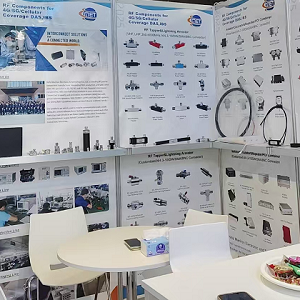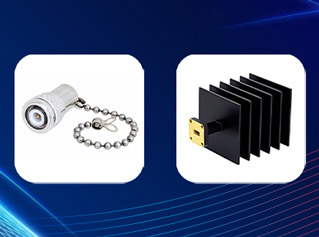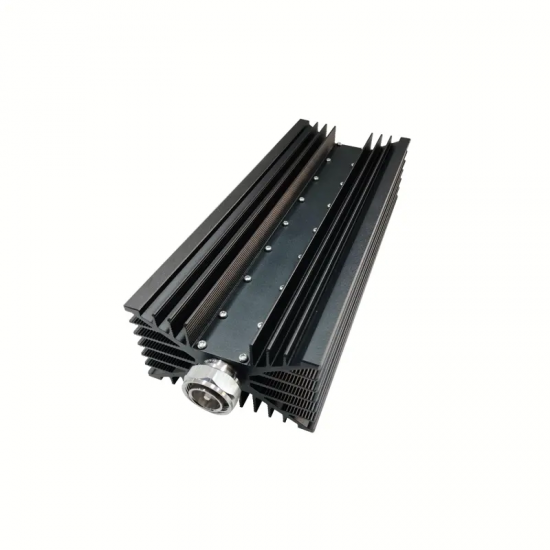-
 What is low noise amplifier?
Aug , 24 2024
What is low noise amplifier?
Aug , 24 2024
Low-noise amplifier/LNA is a special kind of electronic amplifier, which is mainly used to amplify the signal received from the antenna in communication system, so as to facilitate the processing of electronic equipment in the later stage. Because the signal from the antenna is generally very weak, low noise amplifiers are generally located very close to the antenna to reduce the loss of the signa...
View more
-
 Exciting News: Our Participation at MWC 2025 in Spain!
Mar , 06 2025
Exciting News: Our Participation at MWC 2025 in Spain!
Mar , 06 2025
Exciting News: Our Participation at MWC 2025 in Spain! We are thrilled to announce that our company is participating in the Mobile World Congress (MWC) 2025, taking place in Spain from March 3rd to March 6th. This is one of the largest and most significant events in the telecommunications industry, and we are showcasing our latest Low PIM RF passive components and connecting with industry leaders....
View more
-
 Common waveguide components: waveguide terminals
Mar , 18 2025
Common waveguide components: waveguide terminals
Mar , 18 2025
2. Waveguide Terminals 2.1 Performance Characteristics Key electrical parameters include frequency range (determined by waveguide dimensions), VSWR, and input power handling. Physical attributes like size, weight, and material selection (e.g., corrosion-resistant plating) are equally vital. Thermal management strategies vary: 2.2 Materials and Applications A waveguide terminal typically consists o...
View more
-
 Understanding Jumper Cables in RF Systems
Apr , 07 2025
Understanding Jumper Cables in RF Systems
Apr , 07 2025
What They Are and Why They Matter Jumper cables, also known as RF jumpers or feeder jumpers, are short coaxial cables used to connect various components in an RF transmission system. Though seemingly simple, they play a crucial role in ensuring signal integrity, mechanical flexibility, and overall system performance in wireless infrastructure. 1. What is a Jumper Cable? A jumper cable is a flexibl...
View more
-
 How To Test The Power of a Load
May , 21 2025
How To Test The Power of a Load
May , 21 2025
To test the power of a load, you can follow these steps: Gather Equipment: You'll need a multimeter, wattmeter, or power analyzer, depending on the accuracy required. Connect the Load: Ensure the load (such as a resistor, motor, or appliance) is properly connected to the power source. Measure Voltage: Use the multimeter to measure the voltage across the load. Make sure to set the multimeter to the...
View more
-
 Common Connector Types for RF Passive Components
Jun , 10 2025
Common Connector Types for RF Passive Components
Jun , 10 2025
In the world of RF passive components—such as couplers, attenuators, splitters, and terminators—RF connectors play a crucial role in ensuring signal integrity, mechanical reliability, and ease of integration. Choosing the right connector is essential for system performance, especially in 4G/5G base stations, DAS (Distributed Antenna Systems), and other high-frequency communication systems. Below, ...
View more
-
 Understanding Low PIM in RF Passive Components: Why It Matters
Jul , 17 2025
Understanding Low PIM in RF Passive Components: Why It Matters
Jul , 17 2025
What is PIM and Why "Low" PIM is Critical? PIM stands for Passive Intermodulation, a form of signal distortion that occurs when two or more high-power RF signals mix within a passive component—such as connectors, cables, power splitters, couplers, or antennas—and create unwanted interference at new frequencies. These new frequencies can degrade system performance, reduce data throughput, and affec...
View more
-
 What Does a Mismatched Coupled Port Actually Affect in a Directional Coupler?
Jul , 23 2025
What Does a Mismatched Coupled Port Actually Affect in a Directional Coupler?
Jul , 23 2025
Directional couplers are widely used in RF systems for signal sampling, power monitoring, VSWR detection, and PIM testing. While these components are passive by nature, their performance is highly dependent on how each port is terminated—especially the coupled port. In real-world applications, improper termination of the coupled port—either by leaving it open, using poorly matched devices, or low-...
View more
 Exciting News: Our Participation at MWC 2025 in Spain!
Mar , 06 2025
Exciting News: Our Participation at MWC 2025 in Spain!
Mar , 06 2025
 Common waveguide components: waveguide terminals
Mar , 18 2025
Common waveguide components: waveguide terminals
Mar , 18 2025
 How To Test The Power of a Load
May , 21 2025
How To Test The Power of a Load
May , 21 2025